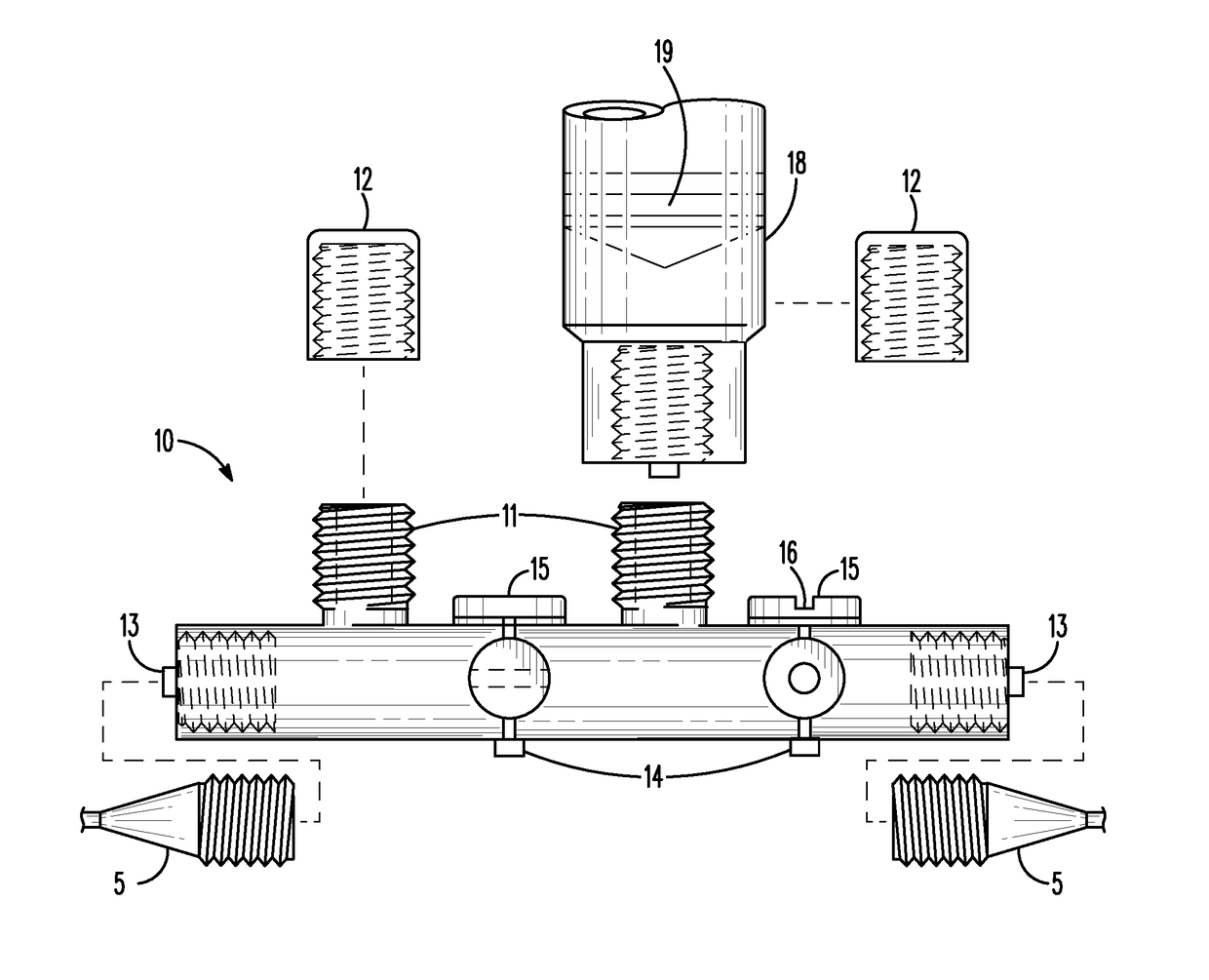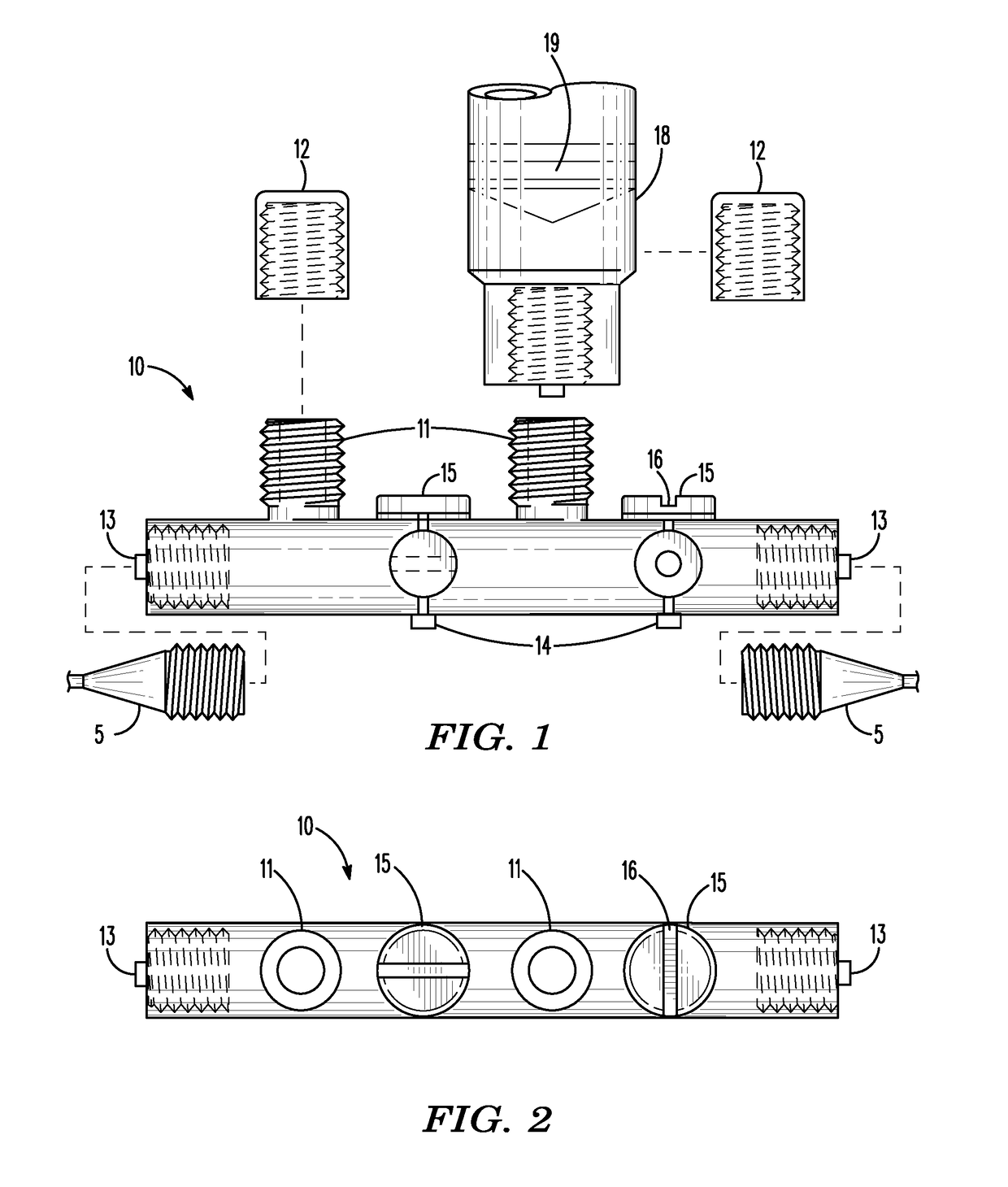Stimulus Transmission and Remote Sensing System
a remote sensing system and stimulus technology, applied in the field of prostheses and ergonomic remote sensing systems, can solve the problems of limiting the effective use of prostheses, the lack of distal sensation is a major limitation of the function of the upper extremities, and the loss of upper limb sensation by amputation is the greatest factor limiting the effective use of the prosthesis, so as to improve the evacuation of air, the effect of compactness and suitability
- Summary
- Abstract
- Description
- Claims
- Application Information
AI Technical Summary
Benefits of technology
Problems solved by technology
Method used
Image
Examples
Embodiment Construction
[0035]Referring now the drawings with more specificity, the present invention essentially discloses an apparatus for sensing information on and controlling a prosthesis. The preferred embodiments of the present invention will now be described with reference to FIGS. 1-17 of the drawings. Variations and embodiments contained herein will become apparent in light of the following descriptions.
[0036]Looking now to FIGS. 1 & 2 a spherical gate exchanger unit 10 is shown. A typical gate exchanger 10 is comprised of e-ports 11, which can be mated to screw caps 12, threaded connectors 13, gate spindles 14, gate controls 15, and preferably grooves 16 located on the gate controls 15. One or more e-ports 11, may be mated with a syringe 18 which will comprise at least a plunger 19. As may be clear, matable threaded attachments 5 can be screwed onto the thread connectors 13 for filling balloons or other attachments.
[0037]The exchange unit 10 disclosed in FIGS. 1-2 is designed to be compact and t...
PUM
 Login to View More
Login to View More Abstract
Description
Claims
Application Information
 Login to View More
Login to View More - R&D
- Intellectual Property
- Life Sciences
- Materials
- Tech Scout
- Unparalleled Data Quality
- Higher Quality Content
- 60% Fewer Hallucinations
Browse by: Latest US Patents, China's latest patents, Technical Efficacy Thesaurus, Application Domain, Technology Topic, Popular Technical Reports.
© 2025 PatSnap. All rights reserved.Legal|Privacy policy|Modern Slavery Act Transparency Statement|Sitemap|About US| Contact US: help@patsnap.com



